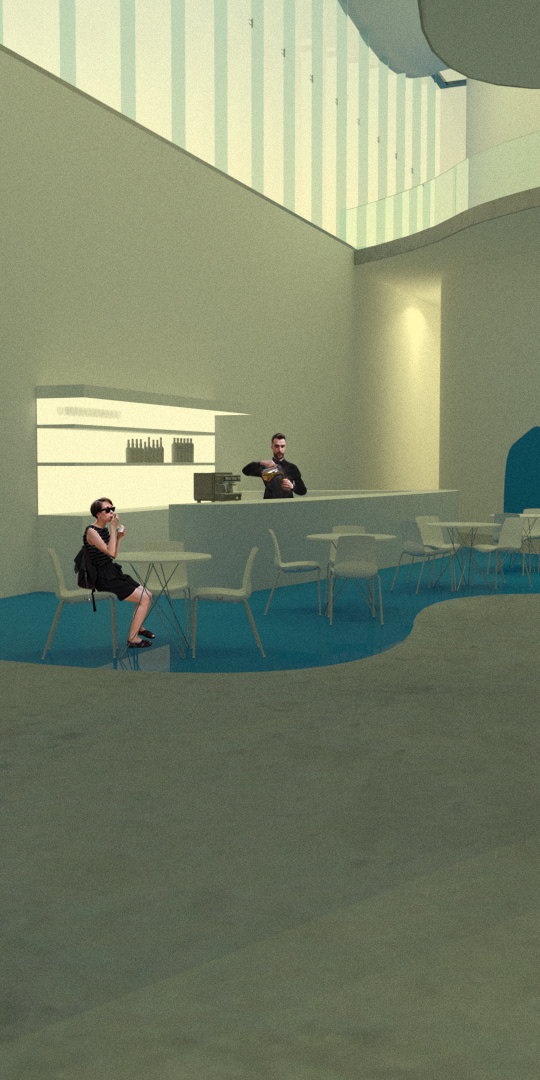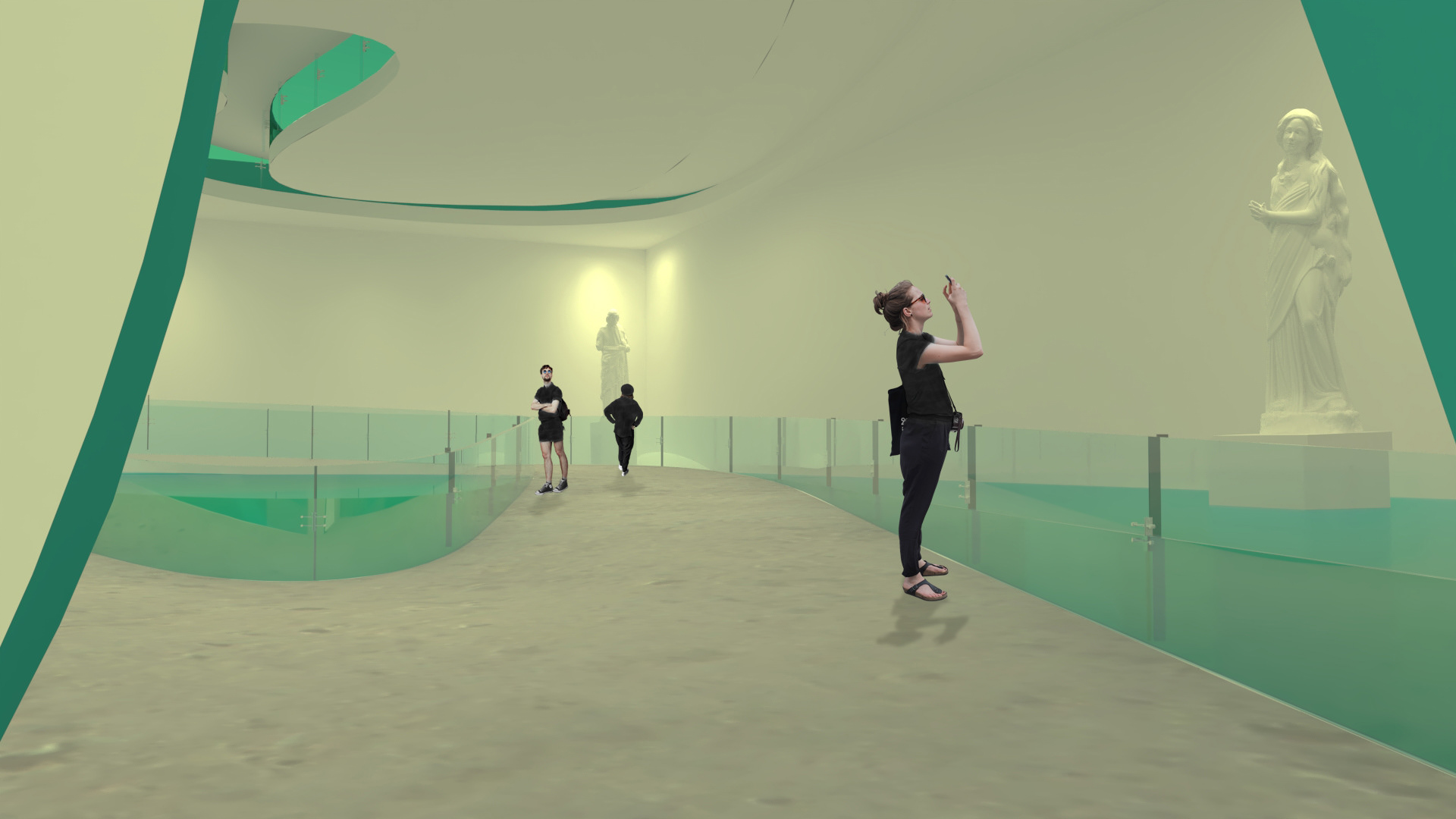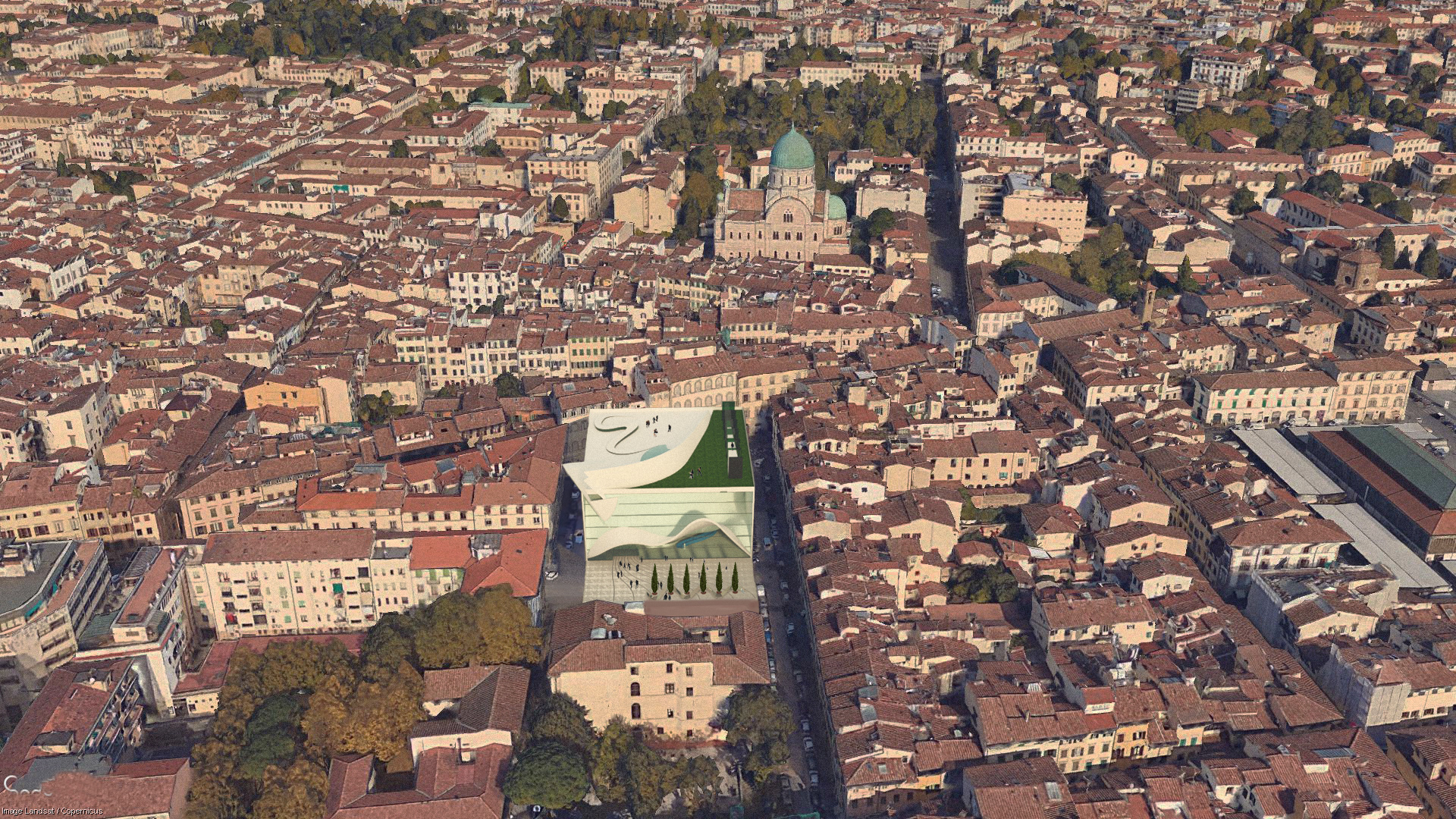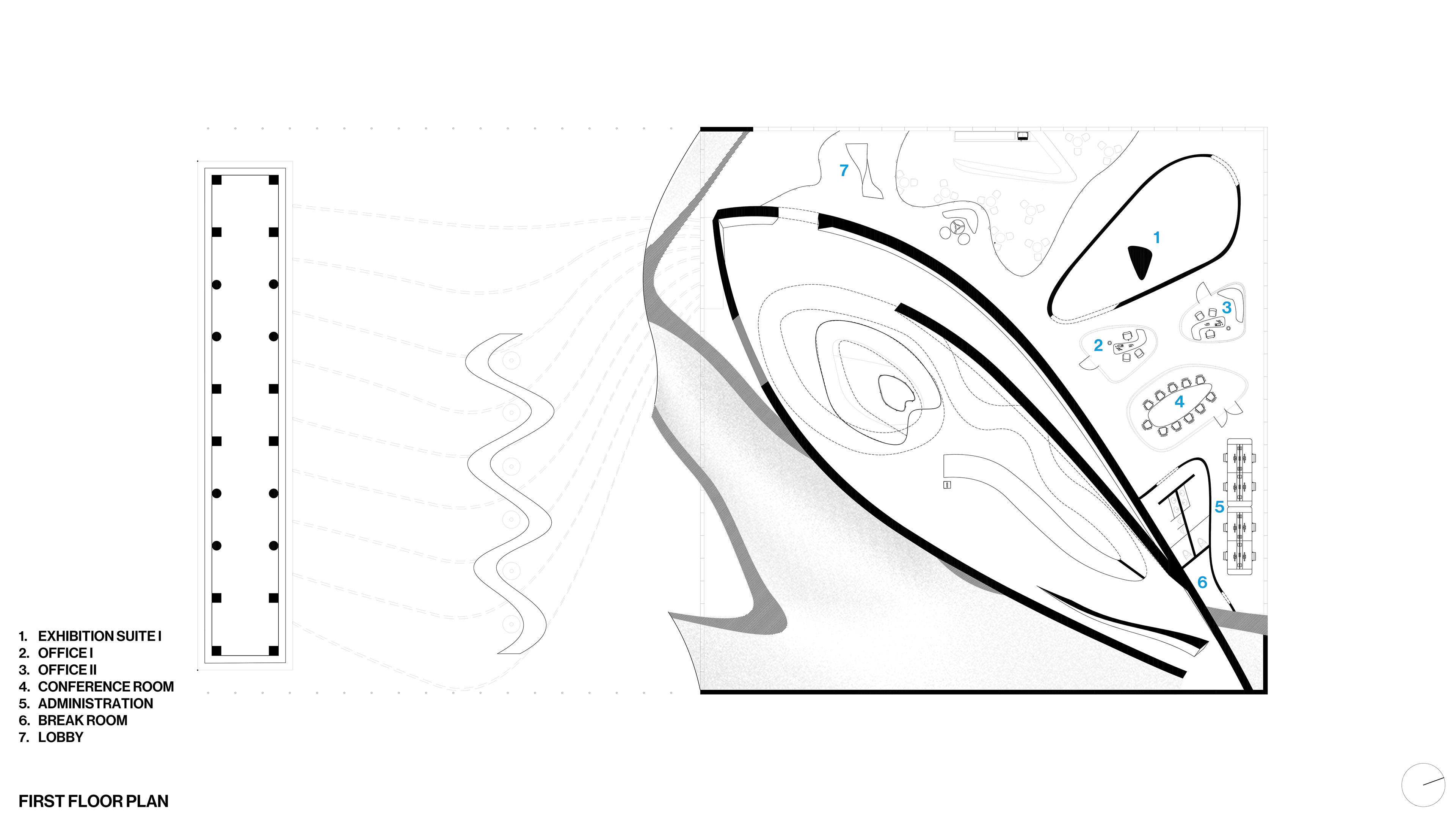History considers the political, artistic and economic revelations of Renaissance Italy as the cultural origin point for a course of events that would eventually lead to and culminate with the modern revolution of the 20th century. The urban fabric of the historic centro in Florence remains intact and a canonical setting that concentrates high art and architecture like few other world cities.
The Opera del Duomo is a museum in Florence, Italy that displays the statues, artifacts, paintings and architectural models that were originally part of Santa Marie del Fiori—the cathedral, or duomo, in Florence—as well as in the niches of Giotto's affiliated Campanile.
The museum is in the formative stages of making some minor renovations, having recently completed an extensive reconstruction of the interior museum space. Disrupting public access to all the exhibits in the Opera for five to six years is culturally impractical and the basis for this project. Having been commissioned to design a building for another site in Florence that will serve as an alternative space for the Opera, this building will open when the Opera closes for renovation.
Exploring the idea of fluidity and motion in the otherwise static city of Florence, this design proposes the form of the perpetually moving fish, deconstructed into planar forms and enclosed in a square “fishtank”. The interior elements, with the exception of the floors, lack any sort of linearity thus allowing walls and doors to ebb and flow.
Considering the site, perhaps the most notable attraction that the Piazza dei Ciompi offers is the Loggia del Pesce. Roughly translated to "fish lodge", this market informs the design choices of this museum which can be divided into three major forms: the fish, the wave, and the tank. The fish is the magnet of this museum, pulling visitors deep into the belly of the building where all vertical circulation occurs. Movement from one floor to the next is through a series of ramps that resembles intestines spreading themselves across the floor. The fish itself is an explosive force, piercing through walls and floors and deconstructed in a way that recalls the early works of Gehry. A hydraulic elevator à la Louvre takes the form of the atrium in which it moves through. The shape of the atrium is based literally off the fish, which combined with the ventricle forms the heart of the fish. In the same manner that a heart acts a central point for the circulation of blood, the heart-shaped atrium allows for human circulation. Auxiliary elements often take the form of a fin: a rounded, misshapen triangle. Where the fish imposes and informs, the wave is a form that is more ambiguous and cohesive. Its form is elusive: it is a ceiling, a floor, a canopy. The final element—the tank—acts as a mediator, a simple orthogonal volume that introduces parametric forms without disrupting the linear rigidity of the city.
Location
Florence, Italy
Instructor
Semester
Fall 2018 [B. Arch]
Program
Museum / Gallery
Type
Individual Project
Size
45000 ft² / 4100 m²
Related
Peel, 2019
Building 65, 2022









diagrams



drawings







